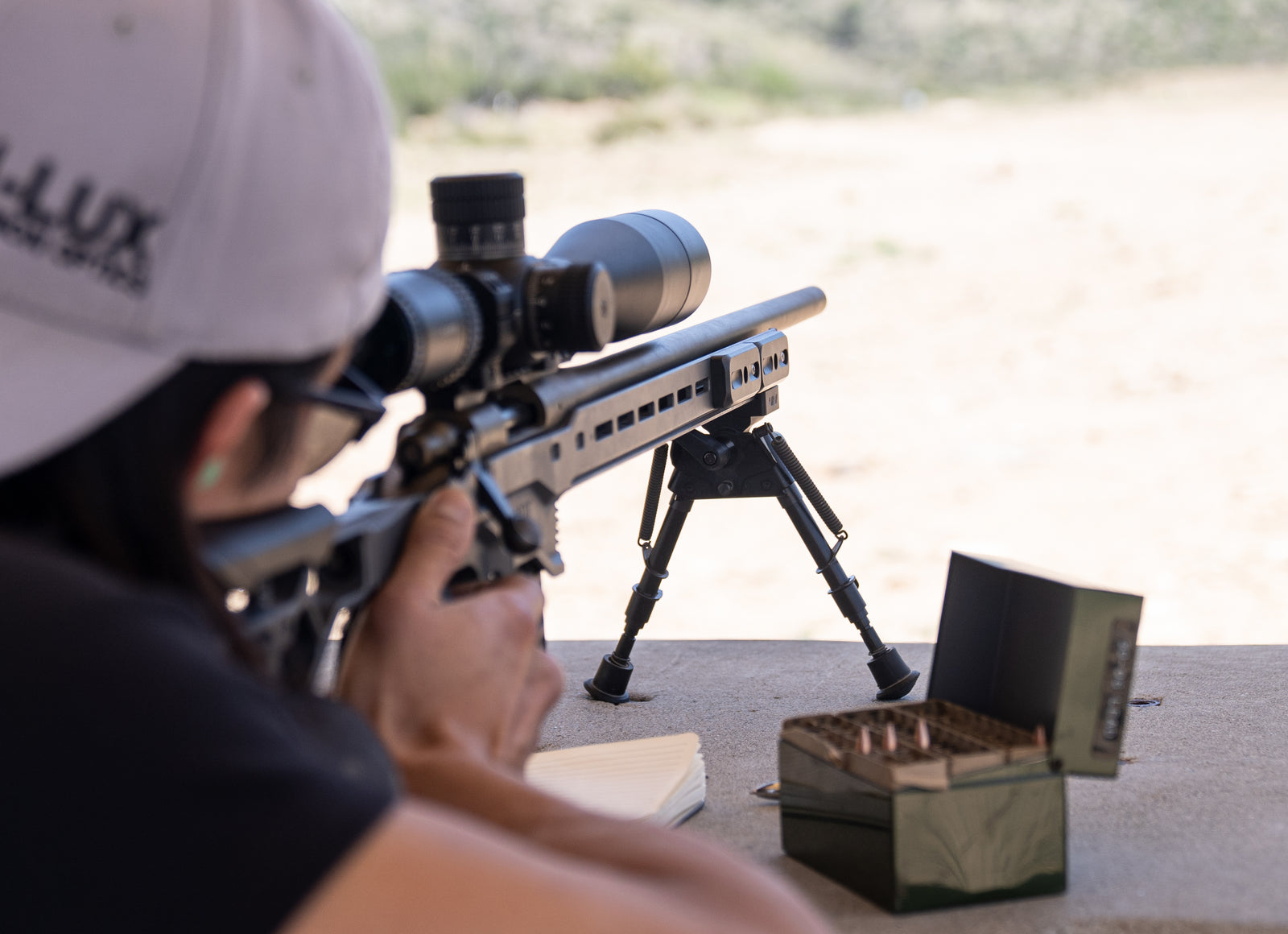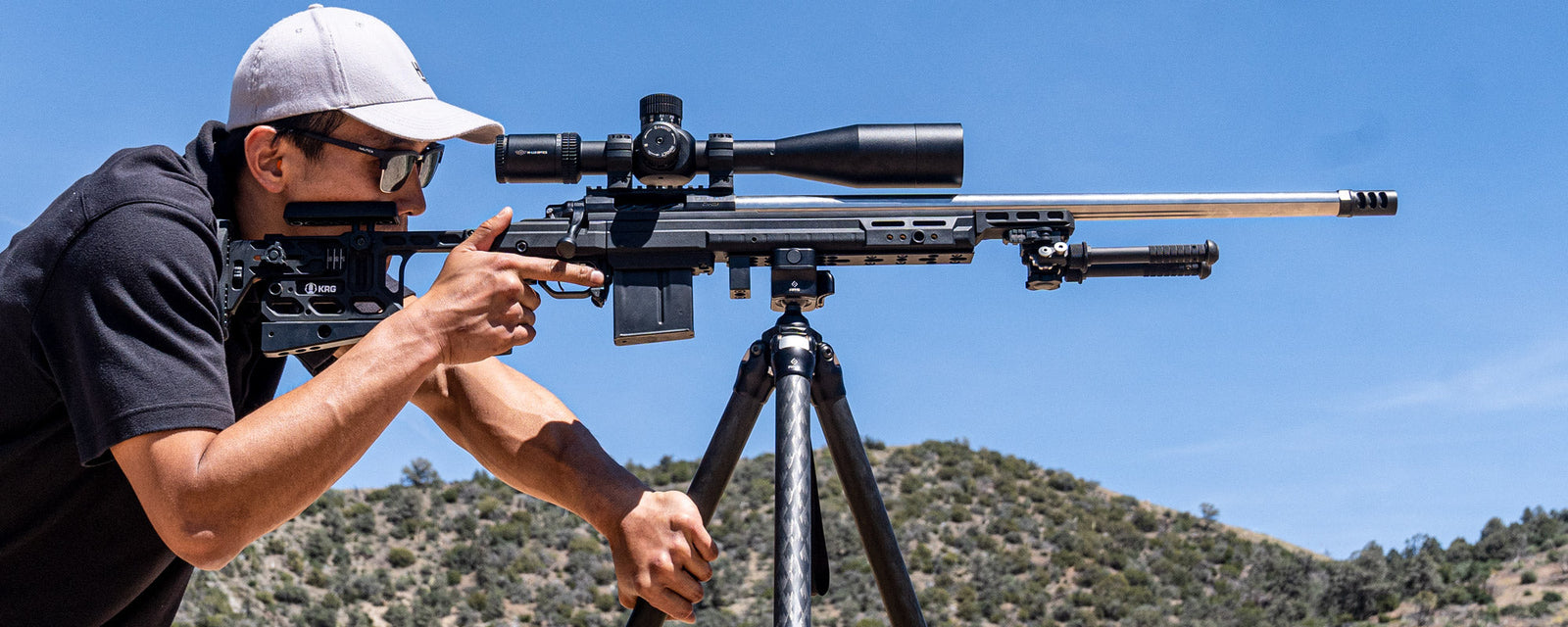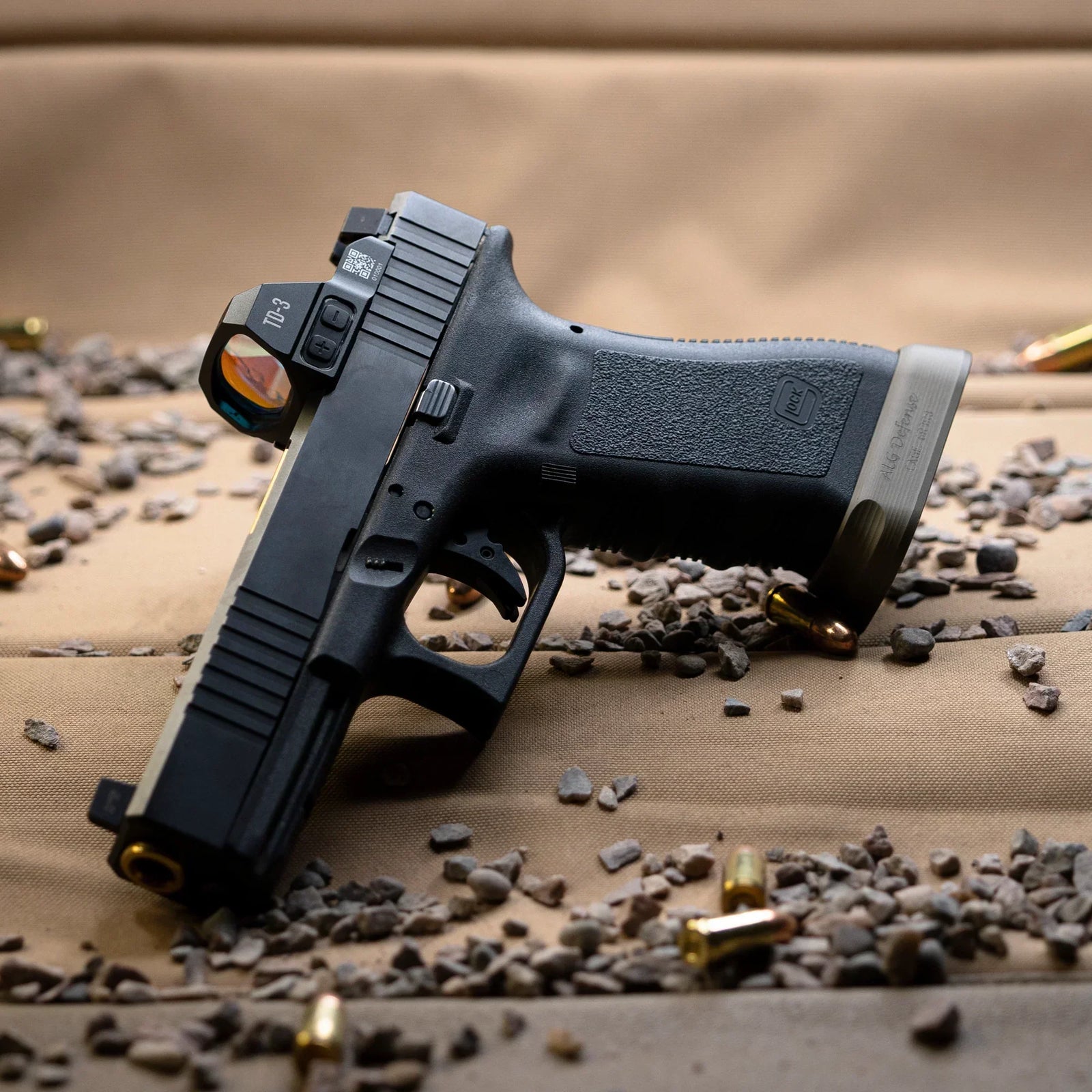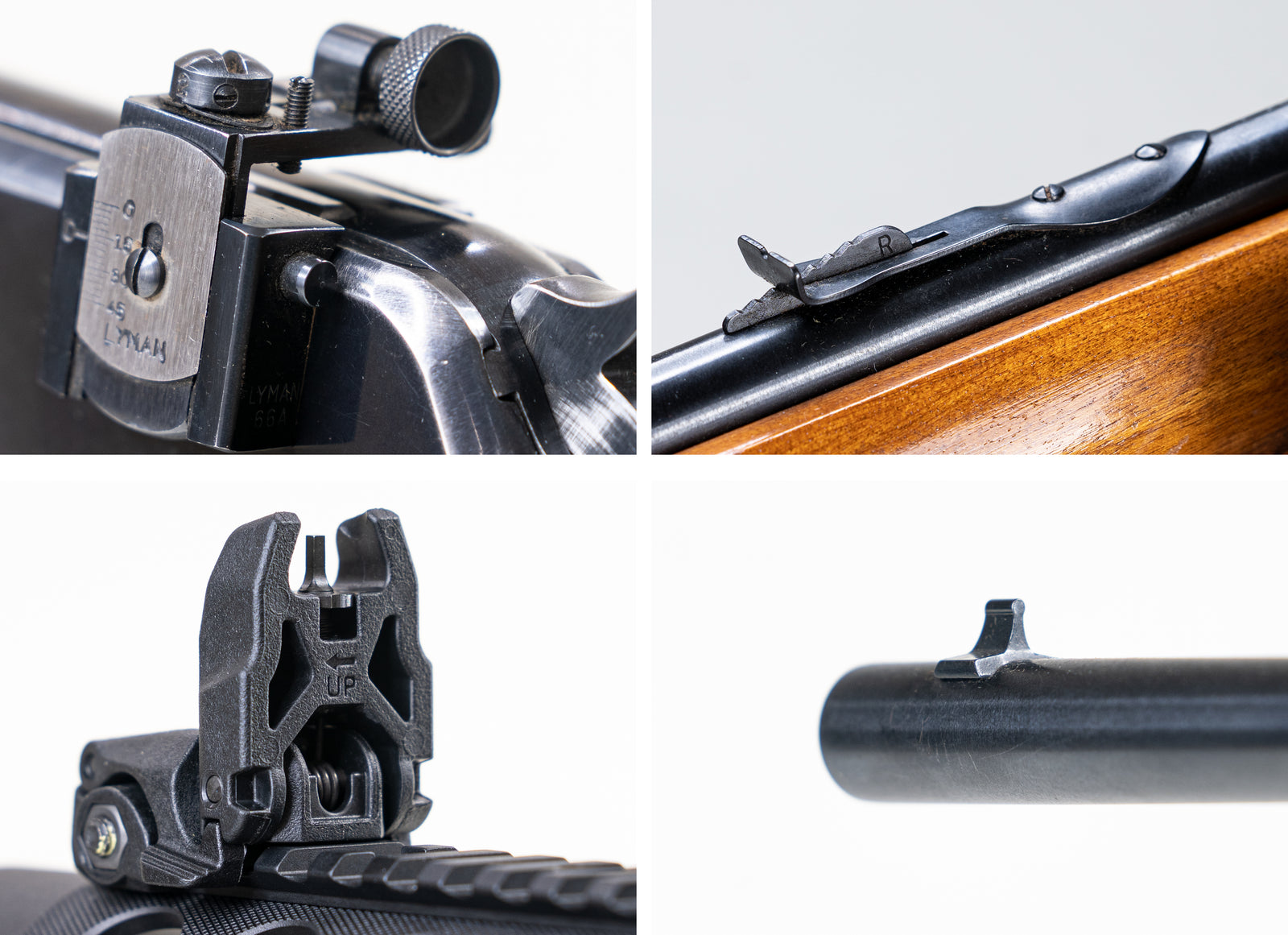Wind blows. The question is - how much?
At the range, you may hear someone ask for a wind call. This is them asking for the speed and direction of the wind, and potentially how much adjustment they’ll have to make to account for the wind. As I hope you’ll see below, an accurate wind call is quite crucial for placing long range shots.

A top-down view of a prone shooter (personified by a stick figure). The amount you turn towards the wind will depend on the target distance, muzzle velocity, BC, bullet weight, and potentially a number of other factors. The general idea is still the same, regardless.
A Wind Tale
A brief story - at a CMP (Civilian Marksmanship Program) National Match, I had a serious brush with wind. The match divided teams of shooters into 3 relays. One relay would manage targets downrange, moving them up and down while marking the impacts. Another relay would have one person fire while their teammate spotted shots and called the wind. The remaining relay would record the score. This match was fired at multiple distances, so the relays worked on a sort of rotation. As it so happened, at the 600 yard distance my relay was the last to fire. Of my team, I was the very last to fire that day. The wind had remained consistent all morning, blowing lightly from behind and essentially not affecting the bullet. As all of the final shooters lined up and got their equipment ready, a ceasefire was called. The range backs up against a waterway, and a jet ski was crossing the danger zone. We had to wait until the jet ski was clear before we could recommence firing.
As we waited, a sudden rainstorm started up. Before too long, it was a miniature monsoon. The calm wind from earlier had spun 90 degrees, becoming a series of 20mph gusts from due right. Rain flew down and to the side. At that distance, that amount of wind could blow a .30-06 bullet into the target next to yours, a few feet away. It became necessary to aim at the target to my right, so that the wind would blow the bullet leftward into my own target. I was borrowing a rifle and did not take the time to figure out the ballistics beforehand, trusting the wind to be reasonably consistent as it had been all morning.
You can guess what happened. The setup was indeed precise, though I did not know at the start how much to hold for the wind. I had to take shots, judge the offset against the wind strength, and adjust where I was aiming. Had I done my homework beforehand, I would have been a much happier competitor.
How important is the wind to your bullet’s flight?
Let's figure it out.
Without knowing the ballistic properties of a round, it’s difficult to know how much the wind (or other atmospheric effects) might alter its flight. I highly encourage you to run the numbers on different rounds through a ballistic calculator - to see what might happen, if nothing else! Let’s take a look at a basic scenario to give you an idea.
Ballistic changes due to wind are described using the same measuring system as when discussing drop from gravity. Let’s assume that under normal conditions (no wind), your bullet will fly directly forward, without arcing to the left or right. As soon as wind starts to hit the bullet, it will push the bullet in the direction that the wind is blowing. Much like accounting for gravity (by aiming up), you’ll need to account for wind by aiming into the wind. If the wind would blow your bullet 5” to the left at a specific distance, you’ll need to hold 5” to the right of the bullseye to negate the wind.
More commonly, you’ll see measurements referred to by their angular measurement. At 500 yards, 5 inches of linear distance is equal to 1 MOA. The previous measurement - a 5” holdover, at 500 yards - could be described as 1 MOA. The angular measurements and linear equivalents will both be listed below.
To set the stage, let’s get a 10 mph wind going directly from right to left (from 3 o’clock, towards 9 o’clock). The bullet is a .308 Boat Tail Hollow Point, BC of .530, muzzle velocity of 2750 fps, weight of 178gr. Let’s also assume the wind is constant, which would be awesome to actually shoot. The sight is dialed in for no wind, so the following changes will have to be accounted for by dialing your sights or holding your aim off to the side.
|
Distance |
200 yds |
400 yds |
700 yds |
1000 yds |
|
Change |
1.2 MOA, 2.5” |
2.5 MOA, 10.6” |
4.9 MOA, 36” |
7.8 MOA, 82” |
At 200 yards, a gentle 10 mph wind would make you miss a soda can if you’re not accounting for it. By the time the .308 bullet reaches 1000 yards, it will have curved almost 7 feet away from the no-wind path.
But one wind speed and one type of round isn’t going to show much information. Let’s take a look at a less aerodynamic popular option: the .22LR. Specifically, the CCI Stinger; a 36 gr projectile, 0.22” diameter bullet, .084 BC, and around 1600 fps at the muzzle. Still going to assume a steady crosswind of 10 mph, though we’ll check the wind at much closer distances than for a .308 bullet.
|
Distance |
50 yds |
100 yds |
150 yds |
200 yds |
|
Change |
4.2 MOA, 2.2” |
8.6 MOA, 9” |
12.5 MOA, 20” |
15.9 MOA, 33” |
This might reveal why the .22LR is such a fun training round. It gets thrown around a great deal by the wind. To hit your target at anything past 50 yards, you’ll need to start calling the wind perfectly. The .308 responds to the wind roughly ¼ as much. At 100 yards, the .22” bullet will be 9” to the side of the bullseye. Meanwhile, the .308” bullet won’t shift that much until it reaches nearly 400 yards. The .308” bullet, in this instance, is heavier, more aerodynamic, and traveling faster.
Wind on the Clock
Wind isn’t always coming perfectly from the left or right. More often than not, it’ll be coming at 2 o’clock or 10 o’clock, or some other direction that isn’t a perfect 90 degrees to your ballistic arc. In these instances, you can multiply your wind adjustment by a known value to understand the adjustment that should be made.
When the wind is coming from directly left or right, it’s known as full value wind. This is when the bullet will be feeling the full weight of the wind’s effects. This is also when you’d apply the full amount of adjustment or holdover to account for the wind.
However, when the wind is coming at a 45 degree angle (so, from 1:30, 4:30, 7:30, or 10:30 on the clock), it’s going to give ¾ value. I know that it may not make much sense that wind coming from the middle doesn’t give ½ of the adjustment, but that’s just the way physics works here. Getting down to brass tacks - let’s pretend the wind is coming from behind you and to the right (blowing forward and to the left), at a perfect 45 degree angle. In this case, you’d still have to aim a bit to the right so that the wind will carry your bullet into the target.
At 700 yards, with that 45 degree wind and a .308 as described above, your 36” of adjustment would become 27” (or, 3/4ths of 36”). In angular measurement (at 700 yards), this is about 3.7 MOA.
The 9” difference between a full and ¾ value wind in the above example is larger than the vital zone on most animals. You could easily cause a wound instead of a show-stopping hit on an animal if you dialed for the wrong angle of wind, let alone speed.
Another common adjustment is the half value wind. This is wind coming at 30 degrees off of 12 or 6 oclock. In other words, wind coming from 1, 5, 7, or 11 o’clock. Here, the adjustment would be half of a full value wind. At 1000 yards, the .308 round needs to be pointed only 3.9 MOA (41”) into the wind to account for the wind’s push.

A diagram of wind values and directions. As the wind gets closer to coming from in front or behind, the amount of drift on the bullet decreases.
As you reach out farther and farther, you’ll realize there’s a slight variation between wind blowing from in front of you and wind coming from behind you. Wind at your back may slightly aid in the bullet’s flight. Wind coming against it will marginally impede it. These changes are minor, but even minor changes can have an impact at great distance.
When to Apply a Wind Hold
For full-power rifle cartridges, such as the .308 Winchester round, wind is largely ignored at distances below 100 yards. Around 300 yards, you’ll need to judge the wind reasonably well. At 600 yards, you’ll need to call (measure) the wind fairly well in order to hit the target. Out at 1000 yards and beyond, you’ll need to be at the top of your game (or waste a lot of shots) to hit the target with confidence.\
Wind meters only measure wind at the location that the sensor is positioned. The wind direction and speed can - and often does - vary downrange. At one of our favorite ranges, the wind regularly switches direction back near the benches, but has a fairly consistent crossbreeze down past 300 yards. The farther out you’re intending to shoot, the more important it becomes for you to visually call the wind speed.





Leave a comment (all fields required)